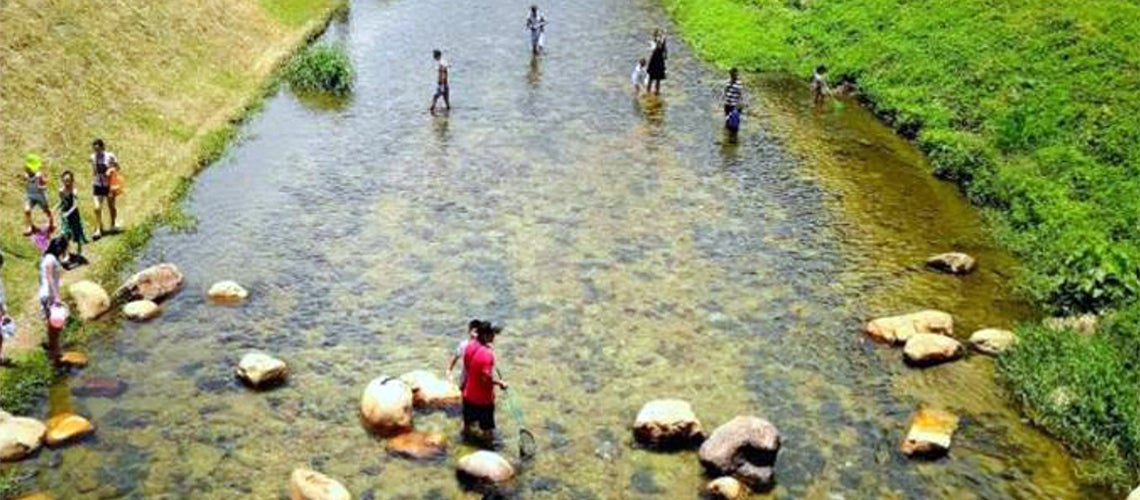 深圳福田河——提供多样的社会、环境和防洪效益。图片:深圳市水务规划设计院有限公司
深圳福田河——提供多样的社会、环境和防洪效益。图片:深圳市水务规划设计院有限公司
The recent flood events in China’s Henan Province and parts of Europe are a poignant reminder of the power of water and its devastating impacts. Floods are estimated to have affected more than 2 billion people globally over the past two decades. Such impacts are expected to worsen due to climate change, with an increase in the frequency and severity of extreme whether events. This is particularly true in the urban space, where impermeable land surface reduces infiltration and increases flash flood risks during storm events. The fact that urban populations tend to live closer to rivers, lakes, and coasts also places cities in harm’s way from multiple, interrelated flood risks.
The number of people at flood risk is only expected to increase, with 70 percent of the world’s population – or 6.2 billion people – predicted to be living in urban areas by 2050, two-thirds of whom are in low- and middle-income countries. Among the world’s most highly exposed countries to floods, China loses an estimated 1 percent of GDP every year on average due to floods, with more than 640 cities subject to flood risks, and 67 percent of its population living in flood-prone areas. In Zhengzhou, the capital city of Henan province with a population of more than 10 million, an extreme rainfall event on July 20 2021[1] caused severe pluvial flooding that reportedly resulted in direct economic losses of more than CNY 65.5 billion (~US$10 billion) and over 290 deaths.
Conventional urban flood management approaches alone may no longer be sufficient to provide the climate resilience and level of services required to address the heightened threats. Increasingly, cities are exploring the integration of natural or semi-natural measures, such as permeable roads, rain gardens, green roofs, and constructed wetlands, among others, to mimic natural water cycles to mitigate the effects of human development. These nature-based solutions have emerged as important tools along the continuum of gray, green, and blue solutions that can help to build resilience, develop sustainable adaptations, and improve disaster risk management.
China introduced the Sponge City Initiative in 2014 to leverage the benefits of nature-based solutions. This approach integrates green spaces and “blue” systems, like wetlands. into conventional “gray” infrastructure, such as concrete embankments, contributing to the 2030 UN Sustainable Development Goal (SDG) 11 to “make cities and human settlements inclusive, safe, resilient and sustainable”. By 2030, China aims to turn 80 percent of its urban areas ‘sponge-like’, addressing surface-water flooding, attenuating peak run-off, improving purification of urban runoff, and enhancing water conservation while improving environmental quality, community health and economic prosperity.
Scaling up the Sponge City Program requires an estimated US$1 trillion. While investments to date have largely come from government funding, innovative and more diversified financing options are necessary to fill the financing gap. The answer starts with better valuing nature-based solutions, since they provide a range of market and non-market values beyond flood risk reductions – by restoring and conserving natural capital, improving the livability of urban spaces and people’s wellbeing, and contributing to more sustainable outcomes.
A main challenge in realizing the full potential of nature-based solutions is effectively monetizing the wide range of co-benefits and leveraging future returns for sustainable financing. So far, traditional economic analytic approaches do not well capture the values associated with nature-based solutions. Broader recognition of these benefits, and an evaluation of their value under different circumstances, are necessary to provide the foundation for capturing non-market values and leveraging private sector and community financing options for urban flood management.
“The Gray, Green, Blue Continuum: Valuing the Benefit of Nature-Based Solutions for Integrated Urban Flood Management in China,” a new report by the World Bank in collaboration with the Development Research Center of the State Council in China and the Cooperative Research Centre for Water Sensitive Cities, explores a methodological framework to recognize and evaluate the comprehensive social, environmental, and economic benefits of nature-based solutions for integrated urban flood management in the context of China’s Sponge City Program. This framework builds on the “Principles for Valuing Water” articulated by the High-Level Panel on Water convened by the United Nations and the World Bank Group. The report highlights the multiple benefits of nature-based solutions, provides a framework for evaluating their value, and identifies a range of funding options that can tap into the variety of financing sources.
The value of nature-based solutions is typically context specific and informed by the level of social and economic development, as well as the exposure to floods. In lower income urban areas, government funding will continue to be critical in supporting NbS. However, public resources can be better deployed by shifting expenditures from post-disaster responses to more cost-effective preventative measures, such as incorporating nature-based solutions into integrated urban planning at the catchment scale. In higher income urban areas where there are stronger revenue streams, a range of policy instruments can be leveraged to encourage investments in nature-based interventions, such as the establishment of special project vehicles that can issue dedicated bonds to institutional investors. There are also opportunities to better leverage increased property values associated within the improved urban environment, such as linking floor ratio requirements to investment commitments in nature-based solutions. There are a range of funding options that can work to build sustainable cities in China, with the diversity of conditions providing potentially important lessons for other countries.
It should be noted that while nature-based solutions can provide multiple benefits beyond traditional flood mitigation, the recent floods remind us of the challenges of large scale, intense flood events and the prospects of an increasingly variable climate. Nature-based solutions need to be integrated into the built urban environment at a range of scales that acknowledge the hydro-meteorological characteristics within broader 'catchment to coast’ considerations. City-wide flood protection systems need to include both structural and non-structural measures, such as effective forecasting and early warning system, and comprise an optimal mix of hybrid solutions along the blue, green and gray continuum.
[1] Recorded more than 200 mm (7.8 inches) of rain in one hour



Join the Conversation